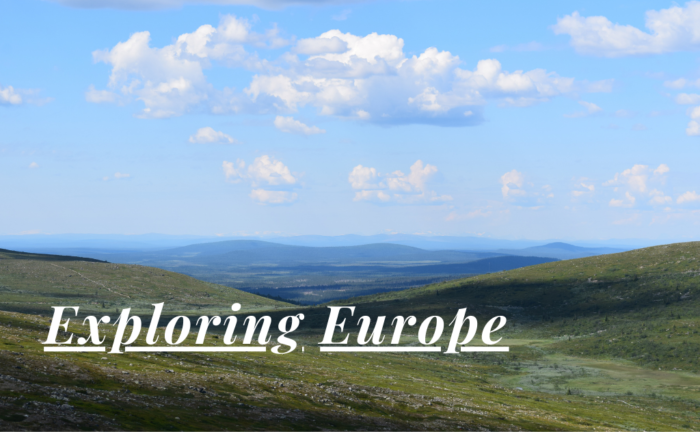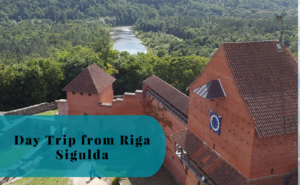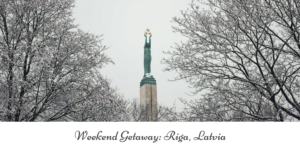Riga is the capital of Latvia and it stands on the banks of the Duagava River, just a short distance from the coast to the Baltic Sea. With a population of around 610.000 inhabitants, it is the largest city in Latvia as well as the largest in the Baltic States. Riga actually accounts for a third of all of Latvia’s inhabitants. This is also a city with a rich Hanseatic heritage, sharing many characteristics with other Baltic cities such as Gdańsk, Lübeck, and Stockholm. Riga was once upon a time a city fought over by great empires. It changed hand a few times and has been a part of empires such as the Swedish, Russian, and German.
Our Visit to Riga
We have visited Riga three times together. The first of these took place already in 2015 when we flew to Riga and enjoyed a weekend in the city and also took the opportunity for an excursion to Sigulda. The visits of 2017 and 2019 was cruises from Stockholm, meaning that we had a few hours in the city before heading back the same day.
- Riga, Latvia – An Autumn Cruise
- Riga, Latvia – A Weekend Getaway
- Sigulda, Latvia – A Day Trip from Riga



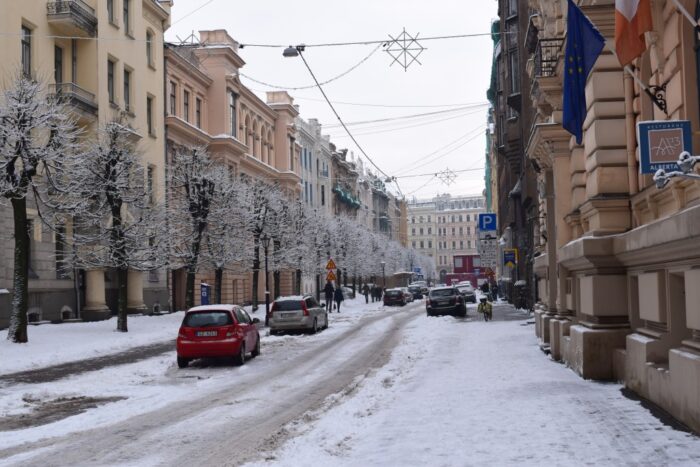

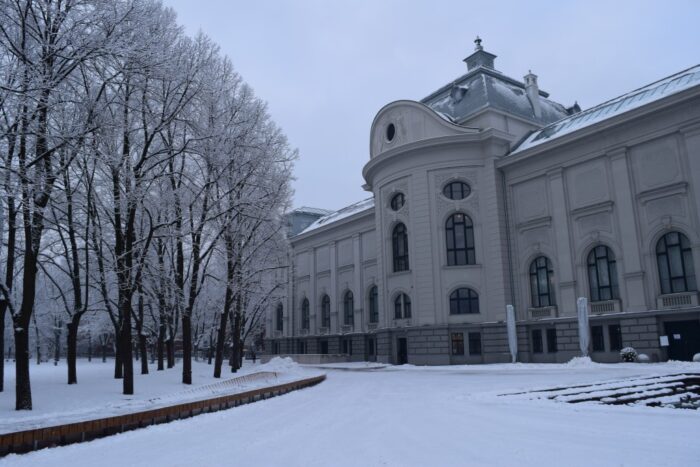






A Short History
Riga has a long history as a trade center, a history that has included both Vikings and Middle Age merchants. After a failed attempt to convert Livonian pagans to Christianity at the end of the 12th century the new crusade began. Bishop Albert from Lower Saxony led the crusade and established his capital in Riga in 1201. This is today considered to be the founding year of the city. This became the start of the Archbishopric of Riga, a subject of the Holy See, and together with the Livionan Order, it makes up what is known as Terra Mariana.
The Hanseatic League
Riga became a member of the Hanseatic League in 1282. The influence of the Hansa is visible to this day and the Baltic trade league has played an important role in Riga’s early development. The influence of the Hanseatic League would continue up until the early 16th century. With the Hanseatic League gone, the city joined the reformation and entered a long period of foreign rule.
The Time of Empires
The time of the Livonian Order came to an end in 1561. Riga would stay as a free imperial city of the Holy Roman Empire for a short period before it became a part of the Polish-Lithuanian Commonwealth. After several conflicts between Poland and Sweden Riga became a part of the Swedish Empire in 1629. Riga would stay under Swedish Rule for almost a century. The city became a part of the Russian Empire in 1721 with the Treaty of Nystad. One thing that had not changed under Swedish rule was the dominance of the German language in the city. It would take until 1891 before Russian replaced German as the official language.
The First World War and the Russian Revolution saw Riga being occupied by Germany in 1917. With the surrender of Germany in 1918 the Republic of Latvia was established with Riga as the capital. Latvia would stay independent up until it was occupied by the Soviet Union in 1940. It only took until 1941 before Nazi Germany marched into the city. The Second World War saw deportations and hardships for the locals both during Soviet and German rule. The city was reconquered by the Red Army in 1944. It was a damaged city that became the capital of the Latvian Soviet Socialist Republic. While the local Germans were deported to Germany the city saw a large influx of foreign workers. This is one of the reasons for the large soviet style residential areas around the city.
Latvian Independence
At the end of Soviet rule the population of Riga consisted of less than 40% Latvians. That was the situation when Latvia together with its Baltic neighbours gained their independence in 1991. The city’s development has since sped up, something that only gained speed with Latvia joining the European Union in 2004. The city has since attracted a large number of tourists, but also international companies such as the Swedish bank giant Swedbank. In regards to the population. The city has today a demographical situation with about half of the population identifying as Lativans, while a bit under 40% identify as Russian. Other large minorities are Belarusians, Ukrainians, and Poles.





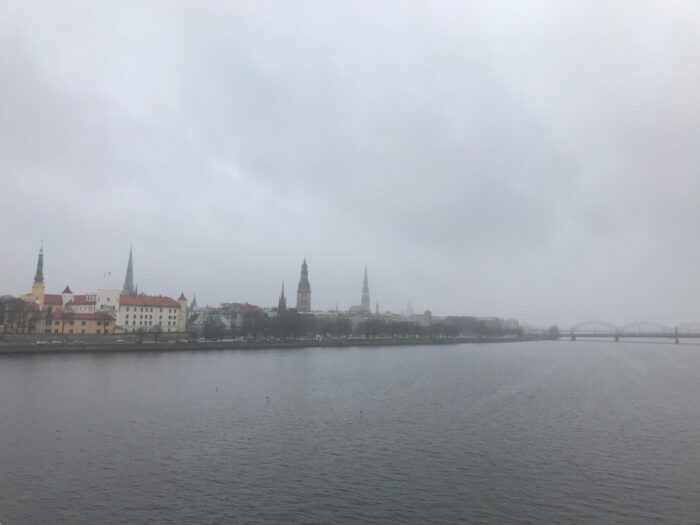






Things to Do and See
The center of Riga is where most tourists will stay. This is an area with parks on one side and the Daugava River on the other. The famous Hanseatic buildings such as the House of the Blackheads are just one of many impressive buildings to enjoy. The city is known for its Art Nouveau architecture with a lot of buildings dating back to the early years of the 20th century. The historical atmosphere might disappear some when leaving the old part of the city, but there are still areas a bit further away that might be of interest.
Rātslaukums
Rātslaukums, or the Town Hall Square is one of the main points of interest when exploring Riga. Surrounding the square you will find three of the city’s attractions. Here you will find the Rīgas Rātsnams, or the Town Hall, a building that was destroyed in the Second World War and that later has been rebuilt. That fate was shared by the impressive and historical House of the Blackheads, a building that originally was built in 1334 and today is one of the main attractions of the city. At the square is also the more modern Museum of the Occupation of Latvia, telling the story of the Soviet occupation between 1944 and 1991.
Doma Laukums
Doma Laukums, or the Dome Square, lies in front of the Riga Cathedral. This Evangelical Lutheran cathedral dates back to 1211 and is still an important part of the city’s skyline. The square is also home to the Art Museum Riga Bourse. The museum was founded in 1920 and is today housed in one of the city’s historical 19th century buildings.
Rīgas Pils
Riga Castle might not be one of the most prominent buildings of the city. The castle dates back to 1330 and can be found on the northern banks of the Daugava River. The castle is today the official residence of the President of Latvia.
Trīs Brāļi
The Three Brothers of Riga is one of the city’s main tourist attractions. These three colorful houses are three of the oldest still standing dwellings or residential houses still standing in the city. The oldest of these dates back to the 15th century, while the others dates back to the 17th century. The three buildings can be found just to the northwest of the Dome Square.
Cathedral of the Nativity of Christ
The Cathedral of the Nativity of Christ is a large orthodox cathedral just north of the Freedom Monument and the Bastejkalna Park. This is the largest orthodox church in the Baltic states and dates back to the end of the 19th cenutry. The cathedral is sorrounded by a green park with man other monuments and sights to explore.
The Freedom Monument
Next to the Bastejkalna Park stands the impressive Freedom Monument. The monument honors the soldiers who died during teh Latvian War of Independence in 1918-1920. The tower reaches a height of 42 meters and was inaugurated in 1935.
Bastejkalns Park
Bastejkalns Park is a green oasis right next to the old town of Riga. This was earlier the Bastion Hill, a part of the city’s fortifications. The hill was transformed during the second half of the 19th century. The city’s channel flows through the park, creating many picturesque sceneries.
Kronvalda Park
The city’s channel continues also through the Kronvalda Park, This is another park landscape located next to the Bastejkalns Park. This is also a park that has replaced former fortifications of the city. The park is also home to many monuments. This is one of many recreational areas of the city.







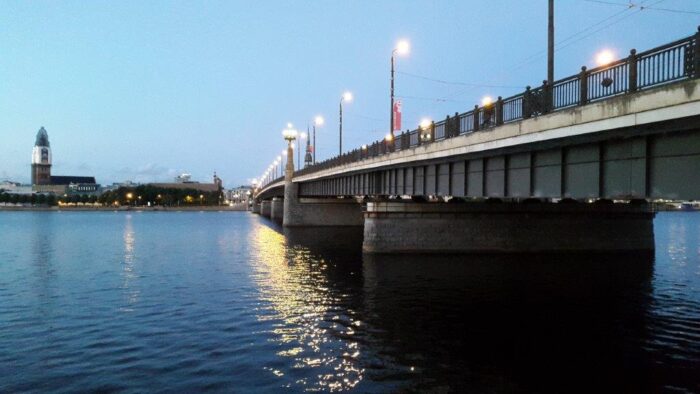




How to Get to Riga
- Flights: Riga International Airport (RIX) is the country’s main airport and it is just to the west of the city.
- Car: You might say that all roads lead to Rome, but in Latvia the case is that all roads lead to Riga. Well, almost at least. This is the capital and lies at the intersection of many of the country’s main roads.
- Train: Riga lies at the center of Latvia’s rail network. There are routes to places such as Jelgava, Liepaja, Rezekne, and Daugavpils. There is also a recently opened international route to Vilnius, the capital of Lithuania.
- Ferry: Riga’s Passenger Port has earlier had regular ferry connections with Stockholm, Sweden that was operated by Tallink. It is for us unknown if any of the ferry services has been restored.
Looking to Explore more of Latvia and Europe?

